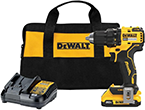Wooden doors often cost an arm and a leg, so instead of throwing them out when they get old why not take the time to restore them? Restoring old doors is a great way to help extend their life while also giving your home a much needed face lift. While this may seem like a particularly difficult project, the truth of the matter is that it is one which is exceptionally simple, though fairly messy.
- Choose the day. Typically old wood doors are primarily exterior doors, so you will really want to choose a day that fairly warm and not all that windy to do the work. After all, you will be removing the door later on, and you don't want cold wind, rain, or other nasty stuff blowing through your home.
- Prep the area. Choose an area of your home that is large enough for you to work in. Ideally you will want a large area that is well ventilated, but out of any wind. A good location would be your garage if you have one. Lay down a drop cloth, and put a couple of saw horses that you can rest the door on. Further, go ahead and collect all the tools and materials that you will need for the project.
- Remove the door. Using the appropriate tools (i.e., screwdriver, hammer, pliers, and so on) remove the door from the frame. Be careful as you do this so you don't accidentally damage the frame, the door, or the hardware.
- Seal the opening. Grab a tarp, or sheet of plastic, and use it to seal the door way. Avoid damaging the door frame by using some staples when you are sealing the door.
- Remove hardware. Take the door out to your work area and lay it out on your saw horses. When you have the door situated firmly on the saw horses begin removing the hardware. Set them aside carefully so that you don't lose any pieces.
- Strip the door. Using either chemical stripping agents or sand paper, begin stripping the door. Keep in mind while chemical agents may be quicker, and potentially less problematic, sanding does have a certain appeal. When done properly, sanding the door can remove any nicks, scratches, or small gouges in the wood. This is definitely a good idea when restoring a door. Be sure that you strip all sides of the door during this step.
- Clean the door. After you have finished removed the last of the previous stain and sealant, you will want to clean the door. Run a shop-vac over the door at least once to remove the majority of wood dust. Once you have done that, you will need to remove the remaining wood dust. The easiest way to do this is by wiping down the door with a damp (not wet) rag or cloth. After wiping down the door allow it to dry, and then repeat the process. In fact, repeat the process as many times as necessary until the door is free and clear of any dust.
- Apply and seal your stain. With your door now clean, smooth, and ready for the stain you can begin applying your chosen stain. Carefully read the directions from the manufacturer at least twice to ensure that you understand them, and then begin applying the seal. Allow enough time between coats for the door to completely dry. When you have reached the desired color for your door, repeat the process with your chosen sealer.
- Clean up and install the hardware. If you are planning on reusing the existing hardware, take the opportunity to inspect and clean that hardware while you are waiting for the stain and seal to dry. In the event that you are not going to reuse the hardware, go ahead and begin installing your new hardware when the door is completely dried. If you are reusing the old hardware reinstall it when you are finished cleaning it, and the door is dry.
Once you have finished cleaning and installing the hardware on the door, you really only have one step left—reinstalling the door. With the door properly restored and reinstalled you can expect to have many more years of faithful service. At least you can expect that service as long as you take care of the door. This means that you will need to periodically reapply sealant to help protect the door from the extremes of the weather.
Author Bio
Lee Wyatt
Contributor of numerous Tips.Net articles, Lee Wyatt is quickly becoming a regular "Jack of all trades." He is currently an independent contractor specializing in writing and editing. Contact him today for all of your writing and editing needs! Click here to contact. Learn more about Lee...
That Wonderful Vanilla Bean
Perhaps one of the most well known and most beloved of spices, Vanilla is an enigma to many people. Sure you can pick it ...
Discover More
Keeping Driveways Maintained
A driveway is more than something to make your home look pretty. Since your driveway is also an investment, this means ...
Discover More
Caring for Kwanzan Cherry Trees
Have you ever been to Washington, D.C., New York City's Central Park, or even to Japan? If so, then chances are you have ...
Discover More
More Home Improvement Tips
Installing Molding for Interior Doors
When you install a door, or replace an existing door, your job isn't really finished until you have installed the ...
Discover More
Installing a Pocket Door
Although pocket door kits include most of the hardware you will need to install your door, you may need to buy a handle. ...
Discover More
Installing a Prehung Entry Door
Whether you are looking to make your home a little more energy efficient, or you simply want a change, installing a ...
Discover More

Comments